Inside Microsoft's Surface RT Tablet
by Anand Lal Shimpi on October 16, 2012 11:00 AM ESTAlong with the first pricing and availability details, Microsoft gave us some additional insight into Surface in a tour of the design and engineering facility where the project was first hatched.
Microsoft wasn’t specific about when work began on Surface other than to say that the company was thinking about what it needed to do to bring Windows 8 to market around the time Windows 7 was completed in the summer of 2009. The decision was made early on to bring a first party device to market that would be an extension of Windows 8. It was from that concept that Surface first emerged.
The design group that eventually created Surface started with the most simple of inspirations: a Moleskine notebook. Although Surface and its Type/Touch Covers make ample use of magnets (both for the kickstand and connecting the covers to the tablet), you’ll notice that there are no magnets holding the non-hinged side of the cover in place. According to Microsoft, it wanted to deliver a true book-like feel and the added resistance of having to overpower a magnet to open the cover of your tablet ruined that goal.
In the creation of Surface Microsoft was laser focused on eliminating so called scary interactions. Every physical interaction with Surface needed to be confident and consistent. From the kickstand to the interface between the covers and the tablet, Microsoft wanted everything to feel very solid. What Microsoft hoped would set Surface apart is its ability to quickly and confidently transform between multiple operating modes (tablet, notebook, standing display, covered display). In pursuit of that goal it put tremendous focus on build quality and materials choices. We’ve seen a resurgence in focus on build quality in recent years, but that’s typically simply to improve device feel - with Surface, having excellent build quality was needed to enable functionality. Users wouldn’t be likely to switch between various usage modes with the Touch Cover if doing so felt like you were going to break the device.
Microsoft’s efforts to guarantee a solid and consistent physical experience with Surface started on the manufacturing side but extended all the way through long term testing. The kick stand should always operate with the same feel and noise for the life of the device, the same is true for the covers.
Microsoft claims it invested heavily in the VaporMg (vapor-mag) injection moulded magnesium process that it uses to create Surface’s chassis. The end result is a unique combination of strength, weight and surface feel. Despite the relatively common sounding name, Surface doesn’t feel like any other portable device as a result of Microsoft’ VaporMg.
Design Evolution
10.6-inch Surface RT final (left) vs. 10.1-inch Surface RT concept (right)
When Surface launched, we commented on the relatively unusual 10.6-inch diagonal display size. Microsoft told us that it originally targeted 10.1-inches for Surface however it resulted in a considerably more cramped multitasking experience, as well as the impact on the Touch Cover keyboard side drove the need for a larger display. Microsoft also considered going with an 11-inch display but eventually settled on 10.6-inches as the perfect balance of productivity and portability.
Microsoft iterated through hundreds of designs, making heavy use of in house polyjet 3D printers to rapidly prototype concepts. Features like determining the position of the sole USB port on Surface benefitted from the 3D printers. Microsoft is particularly proud of Surface’s USB port and is quick to point out that it’s a custom port, color matched to the rest of the chassis and with the same angle as the rest of the chamfer.
Just as important as the Surface tablet itself was the creation of the Touch and Type Cover designs. Microsoft was similarly focused on prototyping and arriving at the perfect cover. Unlike at the Surface launch event, Microsoft did allow us to type on the Touch Cover although I’ll refrain from coming to any conclusions about the keyboards after only a few minutes of use.
Beneath the Surface
Microsoft gave us a look into a teardown of the Surface tablet. Very focused on WiFi reception Microsoft included two antennas connected to a Marvell 2x2:2 WiFi solution (88W8797?). The antennas are routed to the left and right of the front facing camera and are behind RF windows on both sides of the tablet to ensure RF passes through as unimpeded as possible.
The Tegra 3 SoC appears to be paired up with two off-package DRAM devices. I couldn’t get a good look at the rest of the components in the design although I did see a few Atmel chips (touch controllers perhaps?).
Surface’s ClearType HD Display
Although Surface RT only ships with a 1366 x 768 panel, Microsoft was quick to point out that there’s more to display quality than pure resolution. Surface’s 10.6-inch panel features an optically bonded LCD and cover glass stack, similar to what we’ve seen in most modern, high-end smartphones. Optical bonding is expensive to do and not as common in large tablet panels, but Microsoft believes it can do so at reasonable yields on Surface.
The optically bonded cover glass + LCD stack reduces internal reflections, thus reducing glare and increasing light transmission.
One clever trick is that Microsoft, through various coatings, index matches between the touch sensor’s ITO (Indium Tin Oxide) array and the cover glass, once again in pursuit of fewer reflections.
Microsoft claims it’s also very focused on delivering a well calibrated panel with Surface, although we’ll have to wait and put those claims to the test ourselves.
Final Words
Most of what we’ve heard about how Surface isn’t unusual, after all it’s what you’d expect from a great device company. That in itself is the big takeaway however -Microsoft has transformed itself into a focused device maker and not just a software company.
Surface RT will be available on October 26th starting at $499 for the 32GB model with Office 2013 Home & Student edition. Once devices are available we’ll be sure to follow up with a full review.


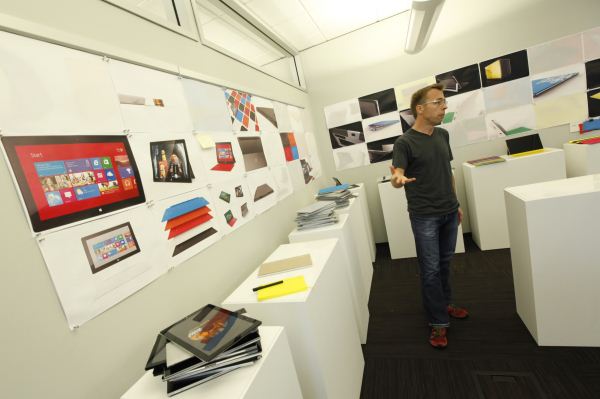

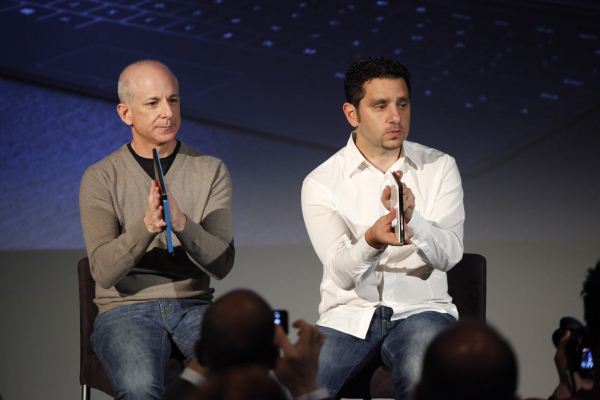
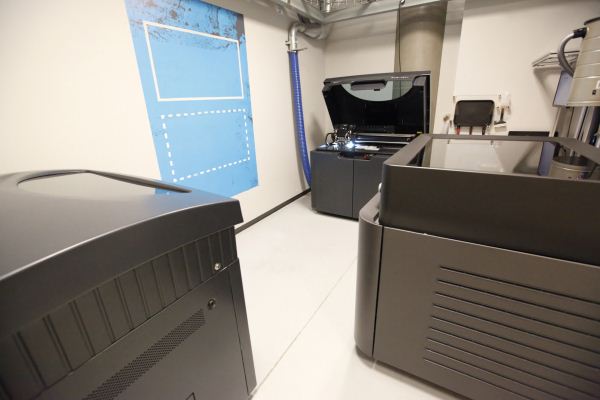
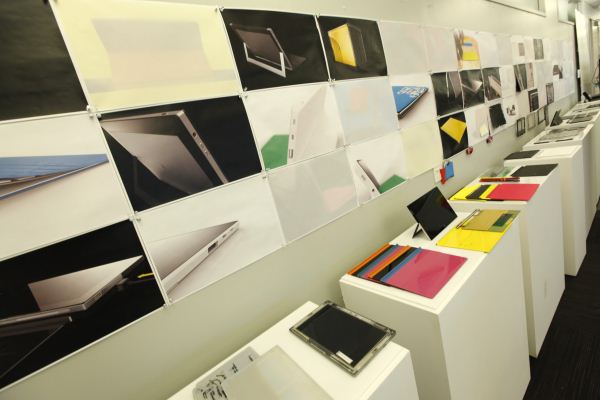
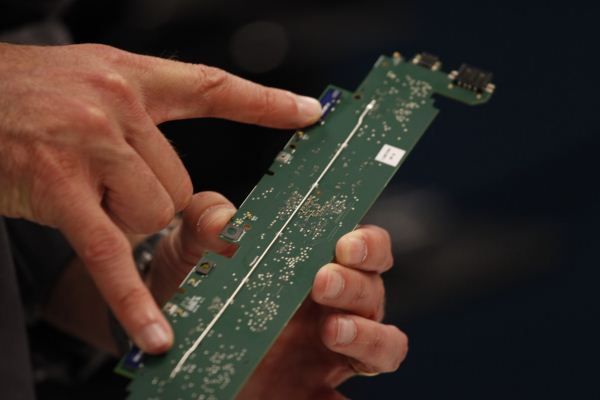






















73 Comments
View All Comments
Alkapwn - Tuesday, October 16, 2012 - link
I think people are missing the point of what Surface has the potential to be; especially when you start with the comparisons of existing product focus that the Android & iPads tablets currently have. Tablets in general are devices designed to consume media and information. They fail horribly in the production / office application areas where we still rely on our laptops and workstations to fulfill that capability. Surface, Pro specifically, has a very good chance with Windows 8 to break through that limitation. (I'm less eager and optimistic for RT for the same reasons.) This could be *huge* and I think it has the potential to make a bigger dent in the corporate sector than any Android or iOS device has to date.tdtran1025 - Tuesday, November 27, 2012 - link
Though I agree with your assessment of the marketing strategy, Surface may not fail at all. The interface is a bear for desktop use, but in the guise of a touch device, it flourishes; and with the hardcore Windows followers, Surface will no doubt pull along a few of them. This presents an interesting hypothetical scenario in which Android users will see some evidence of superiorty of Surface resulting from tighter hardware/software integration, a key factor Android lacks. Translating this into reality, I can see no compelling reason for Mac users to switch but some Android users are up for grab. In any eventuality, more competition makes for a better economic environment, I believe.Arbee - Tuesday, October 16, 2012 - link
Yeah, I think there's room for an iPad-priced Windows (or Android 4.1+) device if the display and materials are also iPad-quality. The Nexus 7 is really the only non-Apple tablet right now that doesn't scream "cheap" when you hold it. (Which is ironic, given it's price point).Zink - Tuesday, October 16, 2012 - link
There are others, they are just more costly. The Asus Transformer Prime tablets are solid metal like an iPad and very sturdy.HisDivineOrder - Wednesday, October 17, 2012 - link
Haha.Yeah. Right. Thing is this. Microsoft is making the very same mistake as every Android device maker.
You can't charge the same as the market leader ($500) and expect to win. The market leader wins every time. It doesn't matter that there's slightly more flash. The app advantage is too huge. You have to charge less, offer more value, win marketshare and eventually find parity.
You don't get to have parity at the start when you have far fewer apps and are unproven. They'll learn when Windows RT devices begin to drop their prices, trying to find a market just like Android.
And they'll find their market... when they hit a price point truly reflective of their status as the OS with the least apps and the OS with the most to prove.
chizow - Tuesday, October 16, 2012 - link
I do think this device could be huge, the Microsoft name and OS lend instant credibility and stability in a sea of fledgling, unproven devices from countless hardware makers. I know a lot of people really like Android but the supported upgrade paths on the myriad hardware types is a complete nightmare. Microsoft automatically lends a calming hand to the situation by controlling both the hardware and associated software/OS updates.It looks like they really put a lot of effort into the hardware design too which is great to see, but its really not all that surprising given all their recent success with the XBox 360 designs. Other than the D-pad on the 360 controller, its easily my favorite game controller of all time. MS also has a long track history of designing great peripherals; some of their Mouse designs are still preferred by many and their keyboards are pretty solid as well.
Personally, I will probably wait for the 2nd-gen Surface before taking the plunge to let them work out the bugs and improve the hardware, but if I were in the market for a laptop/tablet today, I would certainly consider buying one right now.
amdwilliam1985 - Tuesday, October 16, 2012 - link
I agree with most of the stuff you've said.If the price starts around $300 like the previous rumor then I don't mind jumping on it the first week. But since it starts at $500, I'm going to wait and see. Probably get on to the second or third generation band wagon if it's proven with good records.
I did jump on Nexus 7, first gen product, totally against my usual product buying process, but then again, it's a 8GB $200 device, totally worth the try and so far it's rocking solid with Jelly 4.1.2. ;)
jjj - Tuesday, October 16, 2012 - link
running this kind of fluf now? you couuld at least label it as publicity.Zink - Tuesday, October 16, 2012 - link
I agree that this article is not written correctly. The point of an objective review is to cut out the marketing crap, otherwise everyone is going to want flowery language to describe their new products and then what's the point of the article? If you are going to use their words it has to be in quotes. "most simple of inspirations"extide - Tuesday, October 16, 2012 - link
It's a news item in the pipeline... NOT an article or review! At least pay attention to what you are reading!